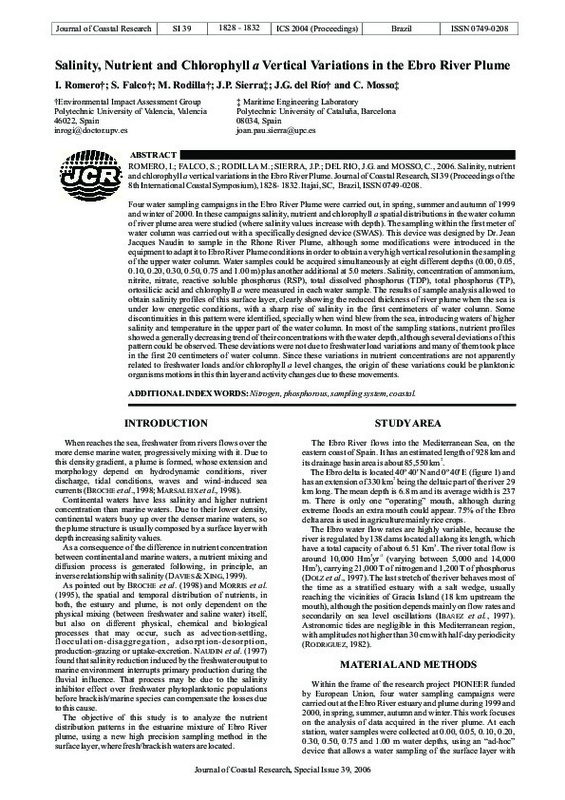JavaScript is disabled for your browser. Some features of this site may not work without it.
Buscar en RiuNet
Listar
Mi cuenta
Estadísticas
Ayuda RiuNet
Admin. UPV
Salinity, nutrient and chlorophyll a vertical variations in the Ebro River plume
Mostrar el registro completo del ítem
Romero Gil, I.; Falco Giaccaglia, SL.; Rodilla Alamá, M.; Sierra, J.; González Del Rio Rams, J.; Mösso, C. (2006). Salinity, nutrient and chlorophyll a vertical variations in the Ebro River plume. Journal of Coastal Research. SI39:1828-1832. http://hdl.handle.net/10251/36178
Por favor, use este identificador para citar o enlazar este ítem: http://hdl.handle.net/10251/36178
Ficheros en el ítem
Metadatos del ítem
| Título: | Salinity, nutrient and chlorophyll a vertical variations in the Ebro River plume | |
| Autor: | Sierra, J.P González del Rio Rams, Julio Mösso, C. | |
| Entidad UPV: |
|
|
| Fecha difusión: |
|
|
| Resumen: |
Four water sampling campaigns in the Ebro River Plume were carried out, in spring, summer and autumn of 1999
and winter of 2000. In these campaigns salinity, nutrient and chlorophyll spatial distributions in the water ...[+]
|
|
| Palabras clave: |
|
|
| Derechos de uso: | Reserva de todos los derechos | |
| Fuente: |
|
|
| Editorial: |
|
|
| Versión del editor: | http://www.cerf-jcr.org/images/stories/386_romero.pdf | |
| Tipo: |
|







